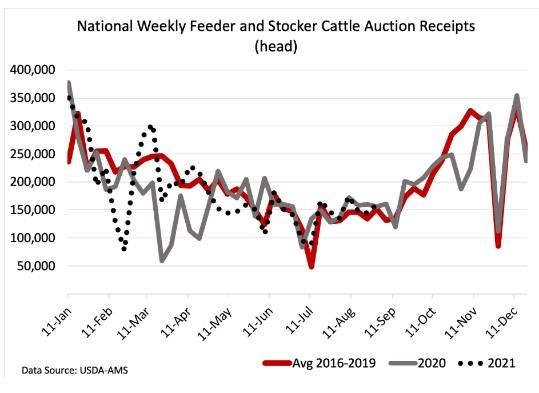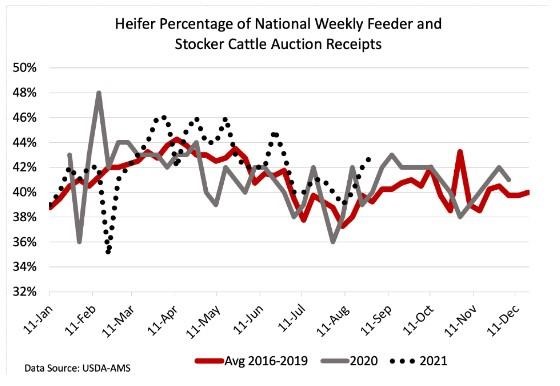By Josh Maples
September is here and the “fall run” is just around the corner. The seasonal pattern of larger auction receipts typically begins in September and October through the end of the year. In this article, we’ll take a look at national auction receipts through August 2021 as we approach the larger volume months of the year.

The chart above shows the weekly number of feeder and stocker cattle sold at auction in 2021 compared to 2020 and the 4-year average from 2016-2019. This dataset comes from the USDA-AMS National Feeder and Stocker Cattle Summary. The data shown in the chart above only includes the auction receipts and not the direct or video sales that are also included in the summary.
Receipts over the past few months have been similar to year-ago. You’ll notice the usual dip around the July 4th holiday and relatively steady weekly receipt totals over the past few weeks. Looking further back, you’ll notice the significant dip back in February driven by the major winter storms. This dip was followed by a corresponding spike of cattle that were sold in the weeks following the storm.
Year-to-date, auction receipts are up about 5% above the same period for 2020. A big driver of that difference was the low auction receipts during March-April 2020 when prices were very low and pandemic restrictions impacted travel and gatherings. Many producers held cattle longer and receipts rebounded during May and June 2020. Since the winter storm, receipts in 2020 have followed a seasonal pattern more similar to the 2016-2019 average.
The chart below shows the heifer percentage of the auction receipts. The percentage of heifers has been slightly higher over the past few months as compared to a year-ago and to the 4-year average. Drought conditions are likely driving more heifer sales in many areas.

Looking ahead, auction receipts will increase seasonally and markets will react to the larger volumes. The year-over-year comparisons will also provide information about the size of the 2021 calf crop which was forecasted in July to be slightly lower than in 2020.
Source : osu.edu